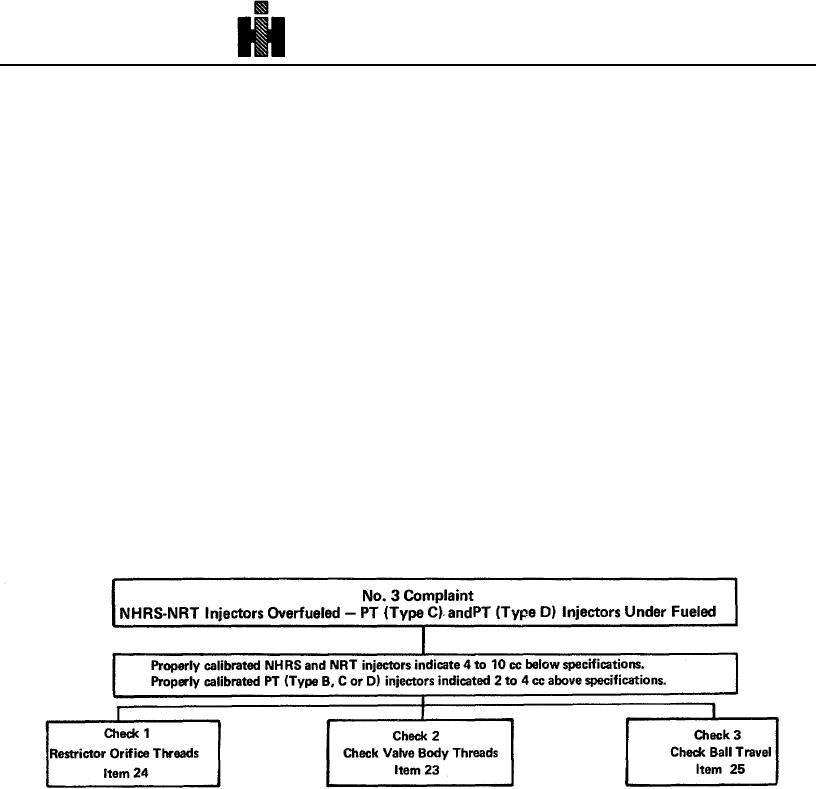
TRUCK SERVICE MANUAL
FUEL SYSTEM
Check 1 - Master Injector
Correction
This can be substantiated or disproved by calibrating a
set of injectors at 132 cc and engine testing them. If the
Cause
fuel rate vs. manifold pressure relationship is not within
specifications, a miscalibrated master injector is verified.
Master injector out of calibration.
During this check the utmost accuracy is required in
weighing the fuel and recording the manifold pressure.
Check 2 - Test Oil Temperature
The correct camshaft and pistons as listed on the CPL
must be used during this test.
Cause
Replace the faulty master with a new master ordered
from the Factory. Clean and correct the faulty master,
Test oil at excessively high or low temperature.
and use it in an engine. Never use an injector as a
master after it has been taken apart or changed in any
way.
Correction
Setting up test stand or calibrating injectors while test oil
is at excessively low or excessively high temperatures.
Check test oil temperature indicator against master
thermometer and compensate as necessary for any
existing differential. It may be necessary to connect cold
or hot water lines to heat exchanger at back of tank to
maintain test oil temperature at the required 90 deg. to
95 deg. F [32 to 35 deg. C]. If temperature exceeds 95
deg. F [35 deg. C] increase cold water flow. If
temperature exceeds135 deg. F[57 deg. C] drain and
replace with new test oil.
Check 1 - Restrictor Orifice Threads
Correction
Torque resistor orifice into check-valve body at 6 inch-lbs
[.7 N. m].
Cause
Correction
Leakage around restrictor orifice threads.
Use gasket (0.030 inch [.76 mm] throttle adjusting shim)
Check 2 - Check Valve Body Threads
under check-valve body. Torque check-valve body into
cup seat block at 10 to 12 inch-lbs [1.1 to 1.4 N. m}.
Cause
Leakage around check-valve body threads.
489

